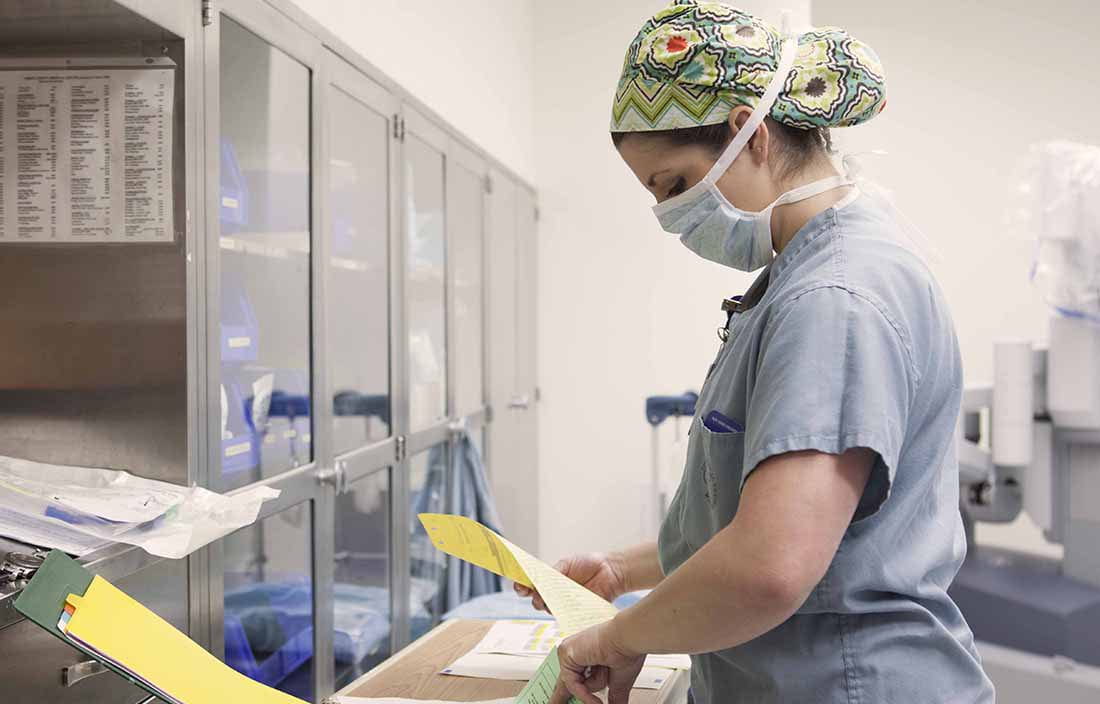Since the COVID-19 pandemic, the healthcare labor market has been under tremendous strain. With labor shortages and turnover reaching nearly 20% (NSI National Healthcare Retention and RN Staffing Report), organizations are looking to outsourcing and agency labor as key strategies to control costs and fill open positions.
Labor productivity as a concept is critical to understanding how to manage your organizations resources. In the acute care environment, labor represents up to 60% of expenditures (RevCycleIntelligence). Now, as we emerge from the pandemic (and crisis-mode), healthcare organizations need to re-align staffing and expenses to prepare for continued staffing shortages and logistical challenges across the industry.
The difference between outsourcing and contracting labor
Outsourcing and contract labor usage in hospitals and healthcare facilities has become increasingly popular since the start of the pandemic. In many cases, these staffing models are used with the hope of reducing costs. However, in many cases, they can lead to increased expenses for hospitals, especially in recent years. To fully understand the cost impact of outsourcing and contracted labor in hospitals, it’s crucial to know the difference between the two approaches.
Outsourcing
Outsourcing is the strategy of hiring an external contractor to manage one or more of a healthcare organization’s business, clinical, or hospitality services. The most common departments for hospitals to outsource include Revenue Cycle (27%), Laundry/EVS (23%), IT (21%), HR and Anesthesia (Kaufman Hall 2022 State of Healthcare Performance Improvement Report). The largest reason to consider outsourcing departments is the potential to lower costs. In some cases, outsourcing a team of experts in a particular area can increase individual productivity and support larger patient volumes.
For example, hiring an outside team of IT experts may allow for enhanced cybersecurity and an increased ability to manage the ever-evolving healthcare informatics and IT landscape, all while minimizing costs related to maintaining data and electronic health records (EHR) servers. Likewise, billing and claims departments are often outsourced to allow for a greater volume to be handled at a faster speed, with increased accuracy and regulatory compliance. In a tough labor market, outsourcing can widen a provider’s talent pool, reduce training costs, increase staff productivity and satisfaction, and ultimately reduce overall turnover.
Despite these positive results, organizations must be selective when considering which areas to outsource. The greatest concern for outsourcing patient-facing and clinical roles is inferior patient outcomes. This would explain why the most commonly outsourced departments remain non-clinical areas; however, outsourcing these areas still comes with confidentiality and data breach concerns. It’s crucial to have a risk management system in place that protects patient data and complies with HIPPA regulations when moving forward with outsourcing any department in your organization.
Contract labor
Contract labor refers to the practice of hiring a nurse or other healthcare professional through an agency for a temporary period of time. The most common form of contract labor in hospitals post-pandemic is agency nursing. Since the onset of the COVID-19 pandemic in March 2020, the cost and usage of agency nursing has increased significantly; contract labor expenses have surged 258% and increased contract labor full-time equivalents (FTEs) by 138% (American Hospital Association).
Increasing workforce shortages over the last few years have resulted in higher contract labor expenses – labor that hospitals now lean on more heavily to meet patient demand. The departments with the highest percentage of agency labor include nursing, emergency department, surgical services, and imaging. With turnover at an all-time high, many hospitals across the United States are still using agency nursing to meet the demand of patient volumes post-pandemic. Do you know the percentage of your staff/nurses that remain agency? The average cost of an agency nurse is $5,000-$10,000 per week. How much is agency labor costing your organization? And does your organization still need the agency labor to support your post-pandemic patient demand?
How to maximize staffing efficiency and increase margins
As a healthcare organization facing workforce shortages and financial stress, how will you maximize staffing efficiency and increase margins? Here are some considerations to keep in mind when making labor decisions for your organization:
Consider a labor productivity review and regular department performance reporting
This is key to understanding where you’re understaffed, overstaffed, and where there are opportunities for process improvement. The first step in understanding labor productivity is understanding department-specific production metrics. A department-specific production metric is the volume of procedures completed — in other words, throughput. For example, the production metric for a radiology department would be procedures. But for a facilities department, the production metric would be square footage. Once you are familiar with your departments production metric and benchmark goal, then consider the questions: Can we afford to cut agency labor? Do we need RTHs that we have currently?
Additional key questions to consider:
How do you know where the true opportunity is for labor savings?
A labor productivity analysis allows your organization to identify where the department-specific opportunities lie. In many cases, there may no longer be a production need to continue hiring or staffing agency nursing to backfill roles needed during, or prior to, the pandemic.
What is the appropriate solution/plan of action?
As an organization, empower your staff to use the levers in their control to manage costs and productivity. As a manager of a department, you’re the owner of your “small business.” Work with the levers in your control to manage your department’s productivity and minimize unnecessary costs. Below are the levers we recommend reviewing when facing staffing and financial challenges:
- Rightsizing staffing
- Process efficiencies
- Scheduling and hours of operation
- Span of control
- Wage index
How do you sustain labor savings efforts?
Sustaining labor savings efforts is key to a healthy financial model. We recommend organizations implement automatic reporting to provide department-specific benchmark targets and monitor productivity on a recurring basis. This will enable department managers to work with the levers above when there is a change in production.
Hone your labor management for better results
Appropriate labor management can represent a significant return on investment for your organization. Labor productivity benchmarking provides a gauge on how your departments are performing compared to other comparable hospitals. Benchmarking also allows for a re-consideration of how current market factors and industry trends are impacting your organization’s labor and savings. Performing a labor analysis and identifying proper solutions may influence your hospital’s decision to continue outsourcing labor and help to control the high cost of agency labor. Consider what strategy(s) will work best for your organization to achieve optimal results and cost savings benefits and take the first step toward re-aligning staffing to the post-pandemic patient demand.





